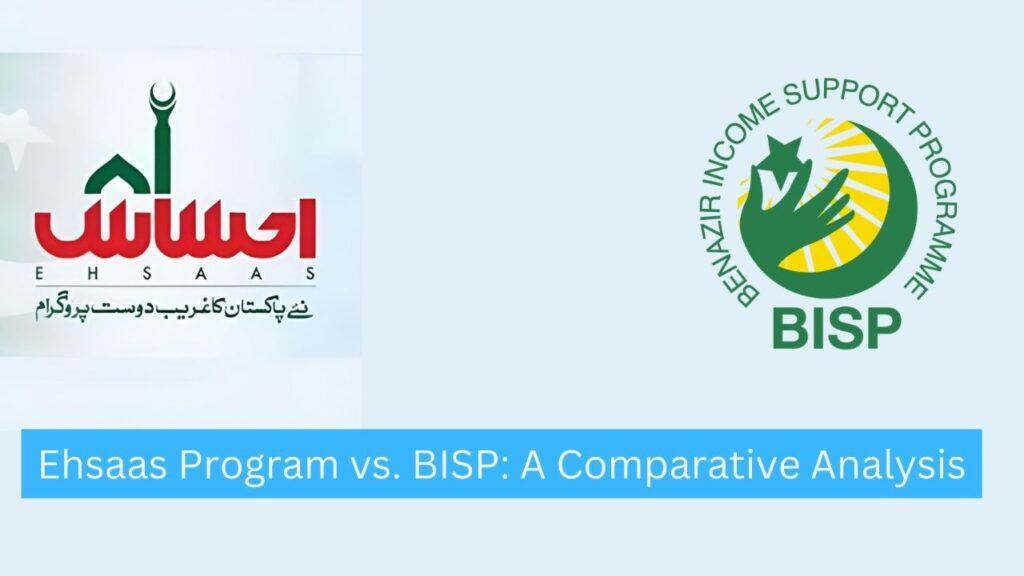Introduction

In Pakistan, social welfare programs play a crucial role in supporting the underprivileged segments of society. Two significant initiatives in this regard are the Ehsaas Program and the Benazir Income Support Program (BISP). While both aim to alleviate poverty, they differ in scope, methodology, and objectives.
Benazir Income Support Program (BISP)
BISP was established in 2008 as Pakistan’s primary social safety net, providing unconditional cash transfers to the poor, particularly women1. It was designed to combat poverty by offering financial support to families, enabling them to afford basic necessities.
Key Features of BISP:
- Unconditional Cash Transfers: Direct financial assistance without any preconditions.
- Focus on Women: Empowering women as primary beneficiaries.
- Nationwide Survey-Based: Identification of beneficiaries through a socio-economic survey.
Ehsaas Program
Ehsaas Program Launched in 2019 by PTI Government. More than 280 projects, policies, and initiatives are included in the larger Ehsaas Program. It integrates income support with various auxiliary services like Ehsaas Scholarship program for every student who studied in Govt Universities and also Govt introduce Ehsaas Rashan Card for people in an effort to achieve a more comprehensive social transformation.
Key Features of Ehsaas:
- Multi-Faceted Approach: Combines cash transfers with health, education, and livelihood initiatives.
- Biometric Payment System: Ensures secure and transparent financial transactions.
- Diverse Beneficiaries: Includes the poor, disabled, transgenders, widows, orphans, students, and travelers.
Differences Between Ehsaas and BISP
While BISP forms a part of the Ehsaas framework, serving as one of its executing bodies, the Ehsaas Program is distinguished by its comprehensive and multi-dimensional approach to poverty alleviation.
Scope and Scale
- BISP: Primarily focused on cash transfers based on a socio-economic survey.
- Ehsaas: A wider scope, addressing various aspects of social welfare through multiple initiatives.
Technological Advancements
- BISP: Laid the groundwork for digital cash payments and beneficiary identification.
- Ehsaas: Expanded on BISP’s infrastructure with enhanced cyber-security measures and biometric verification1.
Policy Framework
- BISP: Operates under a specific law and institutional framework.
- Ehsaas: Envisions a broader policy framework aligned with the concept of an Islamic welfare state1.
Governance and Transparency
- BISP: Faced challenges with corruption and inefficiencies.
- Ehsaas: Introduced stringent data and financial controls to eliminate elite capture and ensure aid reaches the deserving1.
Conclusion
The Ehsaas Program represents an evolution of social welfare initiatives in Pakistan, building upon the foundation laid by BISP. It aims to create a more inclusive and comprehensive social safety net that not only provides financial assistance but also empowers individuals through education, health care, and employment opportunities.
While BISP has been instrumental in providing immediate relief to millions, Ehsaas’s ambitious goals reflect a shift towards sustainable development and long-term poverty eradication. The success of these programs continues to be a testament to Pakistan’s commitment to uplifting its most vulnerable citizens.

